Stevie Ray Vaughan's Fender Broadcaster, Elvis's Gibson Dove and Kurt Cobain's Univox guitars up for auction
Highlights of Julien's Auctions Music Icons 2016

Introduction
Auction house to the stars Julien's Auctions has unveiled a bevy of music memorabilia for its latest Music Icons event, including guitars and gear from the likes of Stevie Ray Vaughan, Elvis and Kurt Cobain among many others.
The auction is set to take place at Hard Rock Café New York on 21 May, and if you have deep pockets, we've included guide prices here. But whether you're bidding or not, there are some remarkable items going under the hammer…
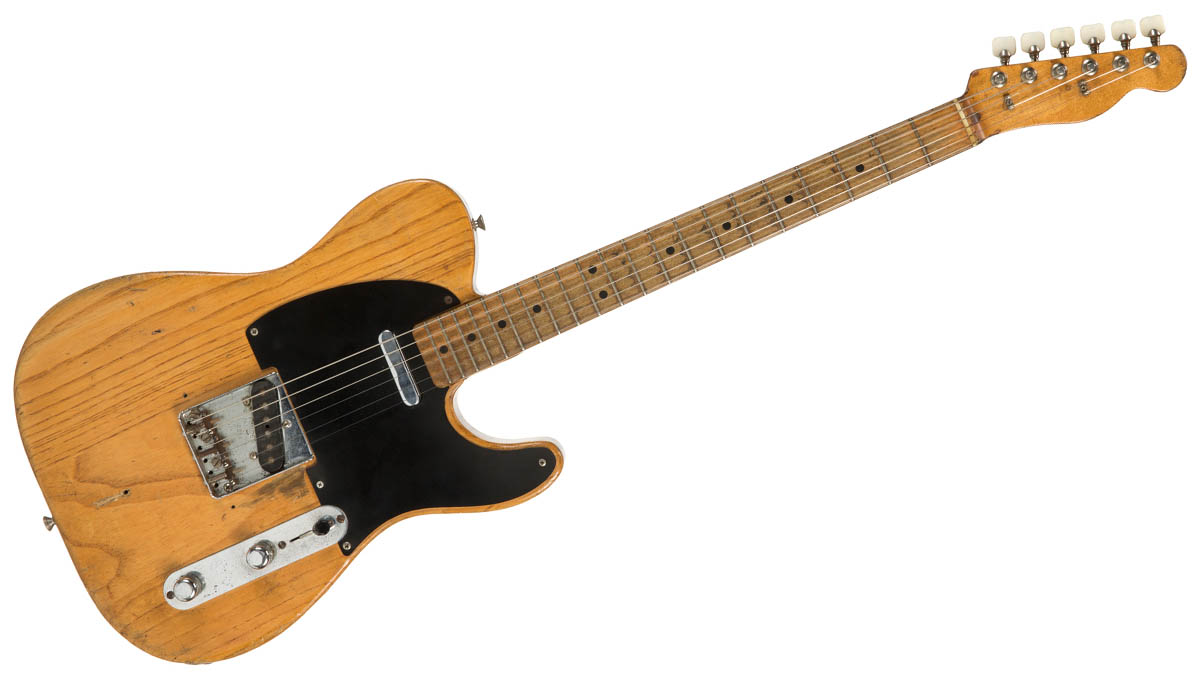
Stevie Ray Vaughan 'Jimbo' Fender Broadcaster
In a November 2006 article in Guitar World magazine, Cutter Brandenburg recounted the story of how Jimmie Vaughan came to give the 1951 Fender Broadcaster to his younger brother Stevie.
Brandenburg states that Doyle Bramhall, friend of the elder Vaughan and future collaborator with the younger, intervened in an argument in 1966 between the Vaughan brothers over Stevie borrowing the Broadcaster without permission.
Brandenburg recalled Bramhall saying, “Man, why don’t you just give it [the Broadcaster] to him? You really don’t play it anymore at shows. If you do that, maybe he’ll leave all your other shit alone.” Jimmie agreed it was a good idea, and Stevie obtained possession of his first professional-grade guitar.
Excerpt from the biography Stevie Ray Vaughan: Day by Day, Night After Night used by permission of author Craig Hopkins.
EXHIBITED:
GRAMMY Museum in Los Angeles, California from 2010-2014
The estate of Stevie Ray Vaughan invited “Jimbo” to be displayed alongside Vaughan’s number one guitar at the GRAMMY Museum exhibition “Pride and Joy: The Texas Blues of Stevie Ray Vaughan.”
GUITAR SPECS
- Make: Fender
- Model: Broadcaster
- Year: 1951
- Serial Number: 0964
- Finish: natural, the finish was removed by Vaughan
- Body: Maple
- Black pickguard
- 21-fret Maple fingerboard with black dot inlays
- 2 single-coil pickups
- 3-position switch volume/tone control
- Fixed bridge

Elvis Presley Gibson Dove
In 1969, Vernon Presley went to Guitar City, near Graceland in Memphis, Tennessee, to purchase a guitar as a gift for his son.
Vernon requested several custom adjustments to personalize the guitar for Elvis, including changing the finish of the guitar to ebony, reported to be chosen to represent Elvis’ recently earned black belt in karate, and the stunning acanthus script inlay of “Elvis Presley” on the fingerboard.
The inlay was created by Randy Wood at Gruhn Guitars of Nashville, and the ebony finish was applied at Guitar City. Crowning the guitar and recognizing Elvis’ achievement was the application of the Kenpo Karate decal on the body of the guitar.
The guitar appears to have been completed and gifted to Elvis in 1971. Presley began using the guitar that year and is photographed performing with it often between 1971 and 1973, including, most famously, during Presley’s televised and broadcasted Aloha from Hawaii concert, noted as the first televised program to be beamed around the world by satellite.
The story ends in generosity when, in 1975, at a concert in Asheville, North Carolina, Presley gave the guitar to audience member Mike Harris. It was Presley’s last show of a three-night tour. Presley was in the middle of the song “See See Rider” when Presley gave the guitar to a shocked Harris. Accounts vary as to what Presley said to Harris, from the prophetic “You keep the guitar. I gave it to you for a reason. Someday it will help you out,” to the humble “Hold on to that. Hopefully, it’ll be valuable one day.” The 21-year-old Harris sat with the guitar for the rest of the concert and then received a police escort out of the building.
If the gift had been from anyone else, one would find the gesture unusual, an uncommon act of kindness. But Presley’s history of gift giving makes this one act in a field of many acts of generosity.
SPECS
- Make: Gibson
- Model: Dove
- Year: 1969
- Serial Number: 539461
- Body: Solid spruce top; maple back and sides
- Finish: custom ebony with Kenpo decal
- Gold-plated tuners
- 21-fret fingerboard with custom “Elvis Presley” pearlized inlay
- Mustache bridge accented with two pearlized dove inlays
- Adjustable saddle
- Black pickguard
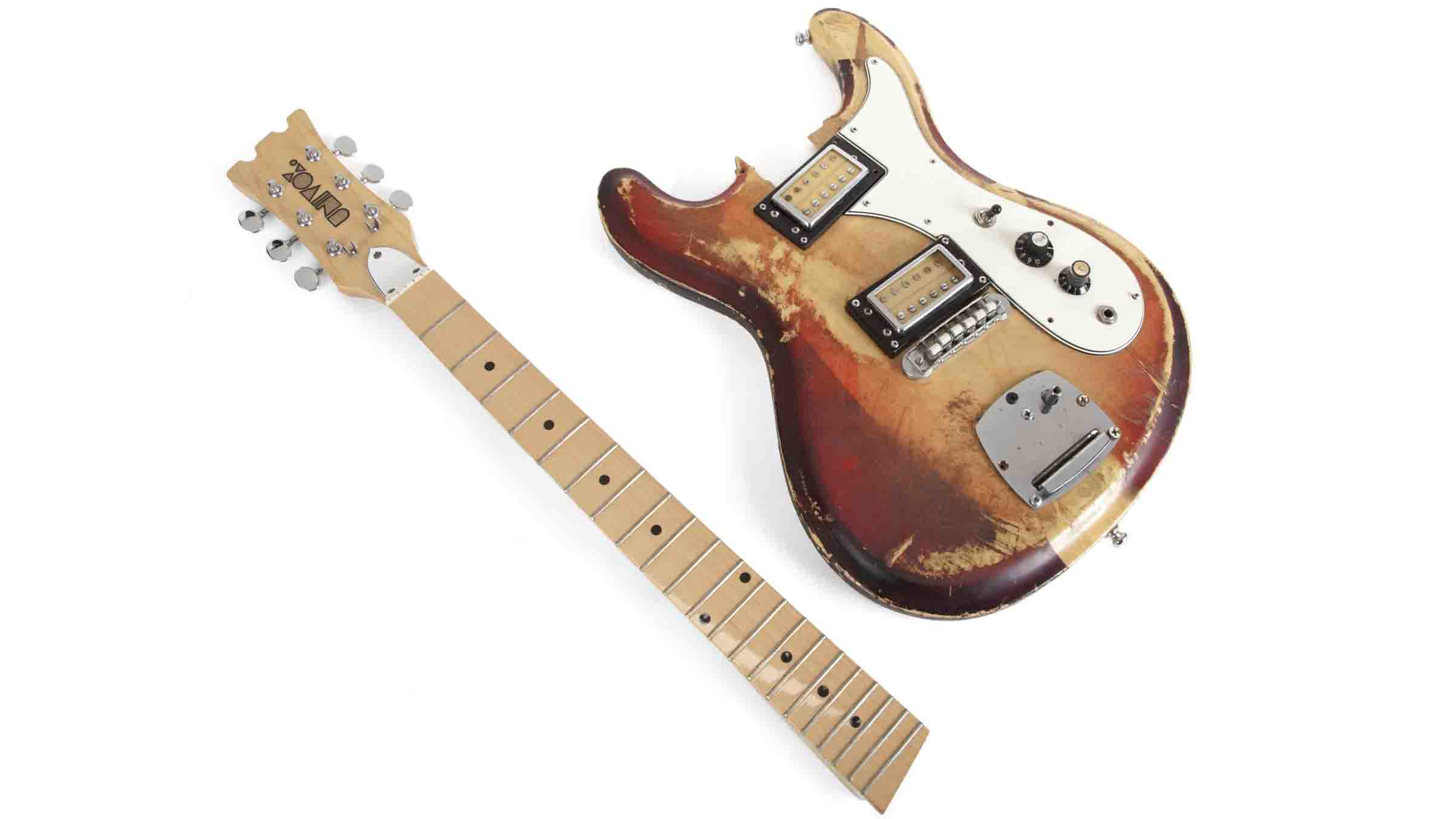
Kurt Cobain 1989 Univox guitar
A Kurt Cobain Univox electric guitar played and destroyed by Cobain at Nirvana’s July 13, 1989, concert at Maxwell’s in Hoboken, New Jersey.
After the show, Cobain, along with his bandmates, stayed at the home of a record executive, Janet Billig Rich, and Cobain gave the guitar to her. The guitar has been stripped of all electronics and components. Accompanied by a letter from Rich and a guitar case.
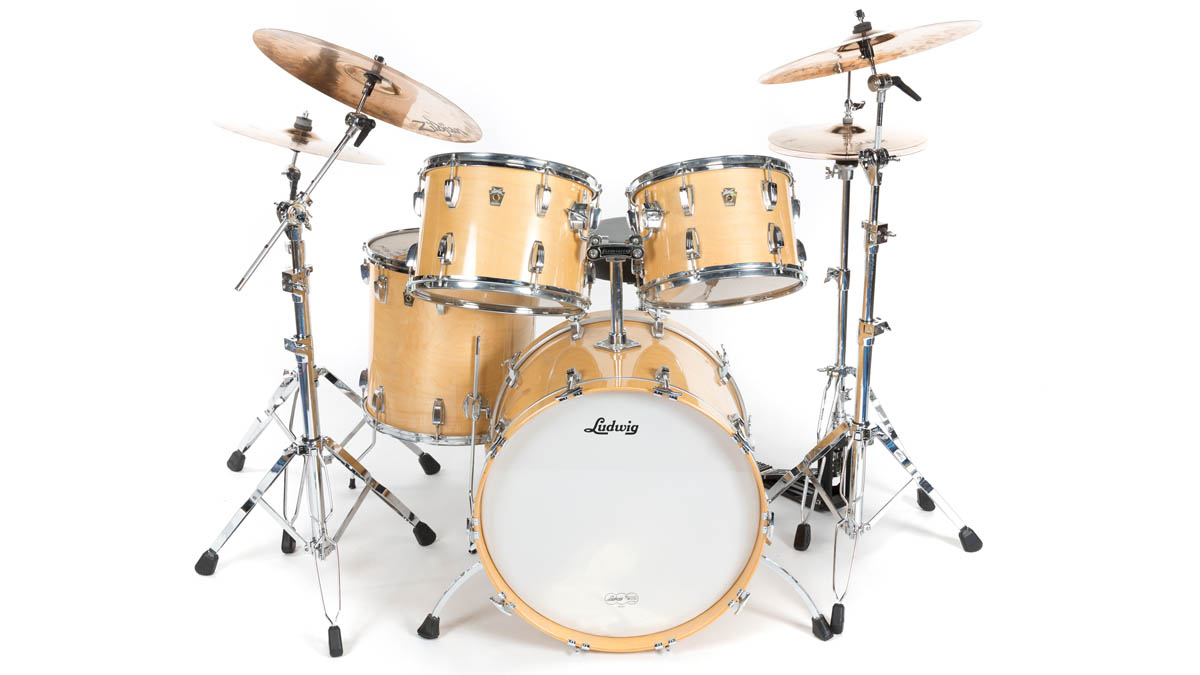
Ringo Starr Ludwig drum kit
A Ringo Starr Ludwig drum kit used in a Charles Schwab Super Bowl commercial in 2000. Starr later gifted the drum kit to a business associate.
The drum kit is accompanied by a Ringo Starr signed Remo drumhead and a pair of Ringo Starr branded Pro-Mark drum sticks; one stick is signed "Ringo."
The drums have a natural maple finish. The kit includes:
22” x 16” Bass Drum serial number 3216562
16” x 16” Floor Tom serial number 3216626
14” x 10” Rack Tom serial number 3216561
13” x 10” Rack Tom serial number 3216560
The floor tom is inscribed by Starr’s son, Zak Starkey, “Hey Josh/ Don’t hit this one/ too much/ Love Zak.” Please note the 14” rack tom was not used in the video.
The kit is accompanied by DW (Drum Workshop) hardware to complete the kit, but not original to the kit, including three boom cymbal stands, a DW drum pedal, one hi-hat stand, one double tom mount, and one drum seat. Student model Zildjian cymbals have also been added to complete the kit, but also not original to the kit. They include a 20” Ride, an 18” Crash, a 16” Crash, and one pair of 14” hi-hats.
Accompanied by Road Runner soft-sided drum bags and a soft-sided cymbal bag.
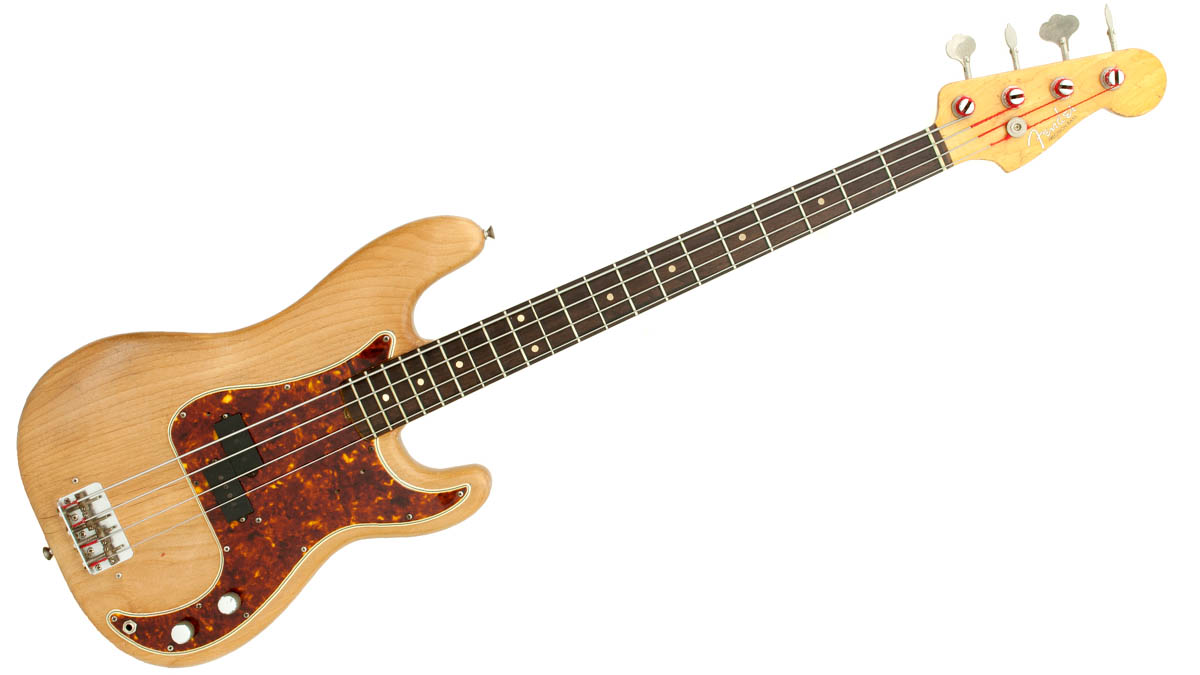
John Deacon Precision Bass
A 1961 Fender Precision Bass used in the 1989 Queen video for "The Miracle." The bass, played by John Deacon, was rented for the video from Harris Hire in Beckenham, England. Deacon's own natural wood Fender Precision bass had been damaged in a stage accident.
In the video four young men are dressed as the members of Queen and are playing identical 3/4 sized instruments. Deacon needed a the Fender bass to match his young doopleganger. The 3/4 sized instruments had been commissioned and made by Phil Harris of Harris Hire and the band asked him if he had a bass to match. Harris sanded down this Fender bass to match the natural wood color of Deacon's and the 3/4 sized bass. Serial number 62741. The unique wood-grain of the guitar screen-matches to shots of John Deacon holding and playing the guitar on set and video. Accompanied by a letter of authenticity from Phil Harris.
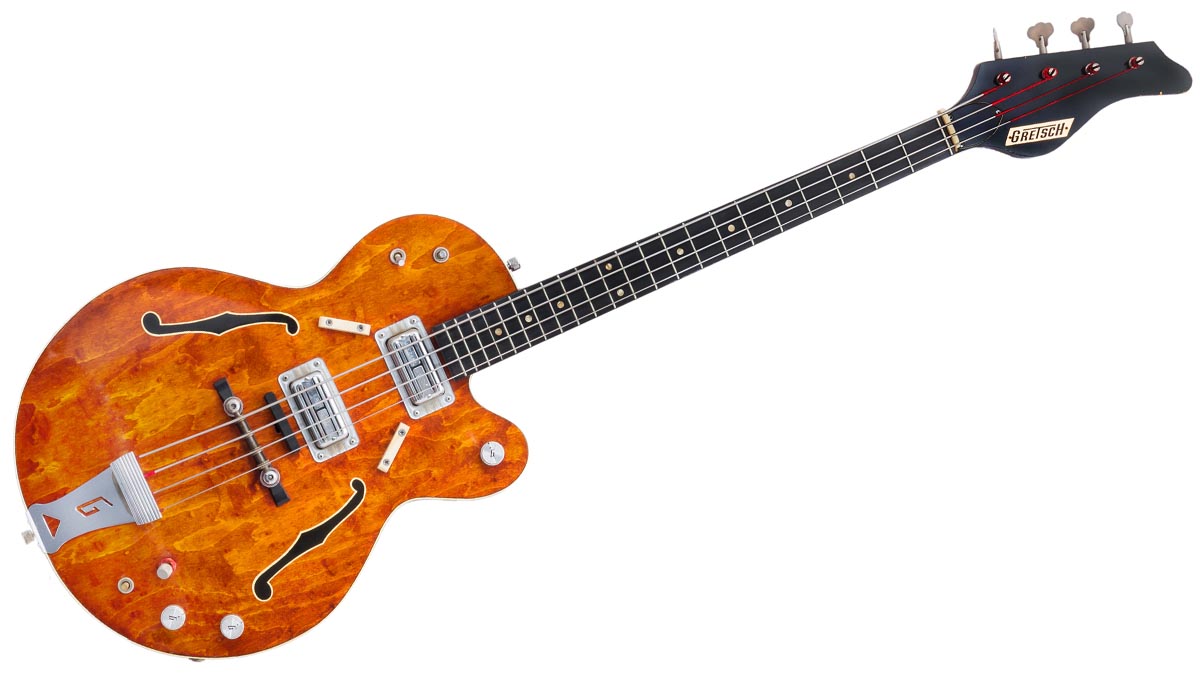
Duran Duran 1966 Gretsch Tennessean bass
A 1966 Gretsch Tennessean bass guitar used by John Taylor in Duran Duran’s hit 2004 music video Reach Up For The Sunrise.
The guitar was rented from Harris Hire in Beckenham, England and is accompanied by the rental documents and a letter from Phil Harris of Harris Hire.
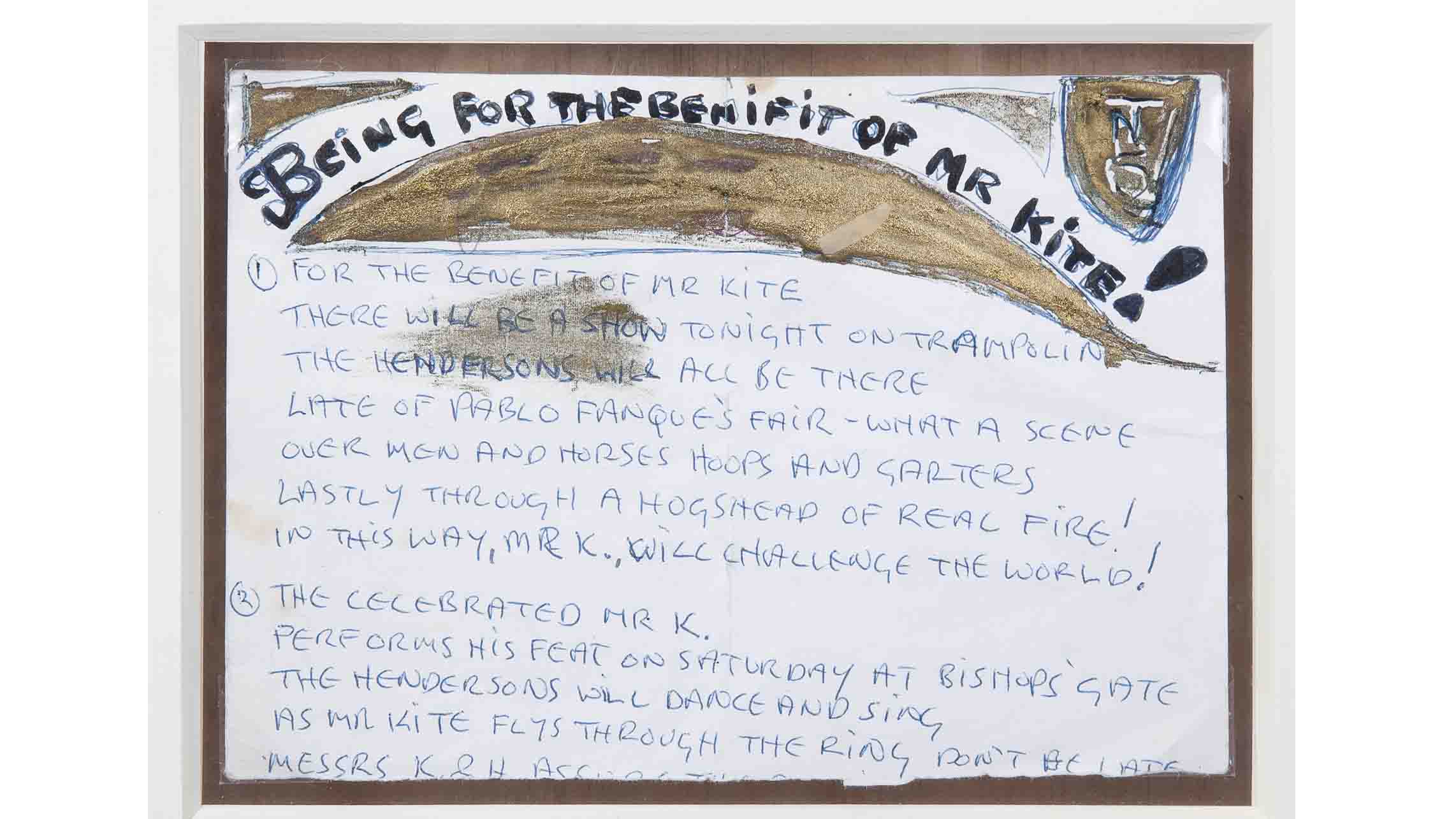
John Lennon handwritten lyrics
A John Lennon handwritten page of lyrics for the song “Being for the Benefit of Mr. Kite!”
Lennon wrote the title “Being for the Benifit [sic] of Mr Kite!” first in ballpoint pen and then wrote over that in black marker. Below the title and accenting the top of the page is gold metallic ink. The sheet contains the first half of the song, written in blue ballpoint ink in all capital letters.
The song appears on The Beatles 1967 release Sgt. Pepper’s Lonely Hearts Club Band. Additional Lennon handwritten notes on verso. The piece is framed so that the writing on both the front and back of the sheet is visible. Not examined outside of frame.
12 1/4 by 14 inches, framed
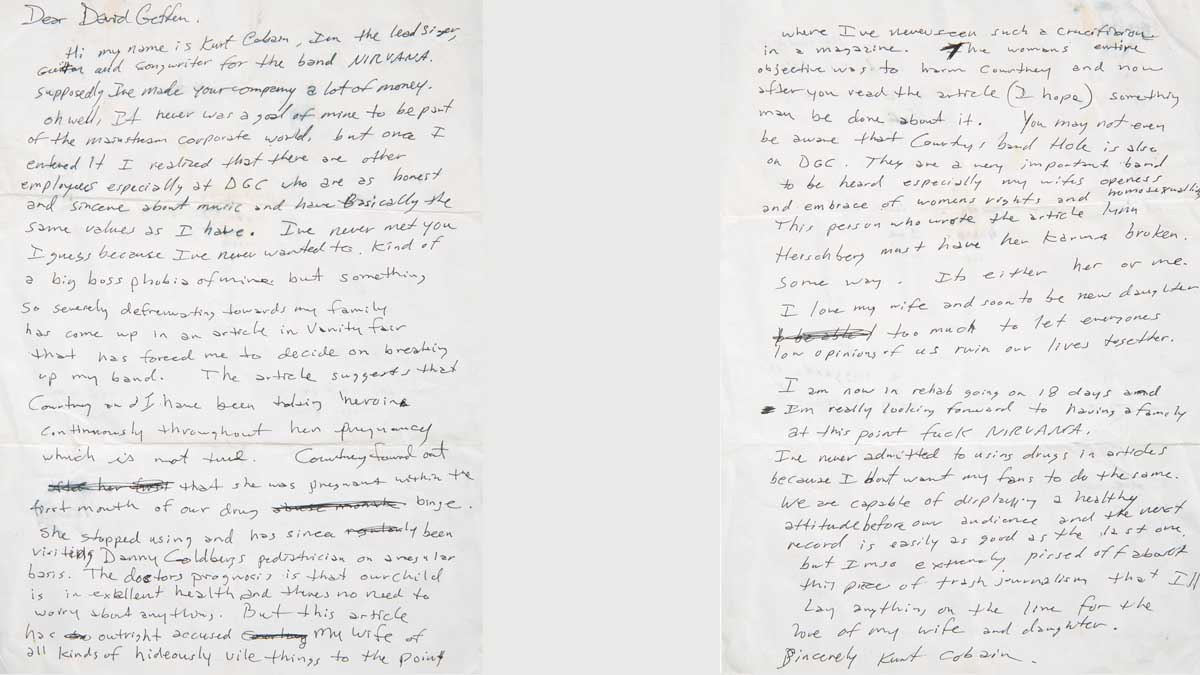
Kurt Cobain handwritten letter to David Geffen
A single-sheet, two-sided handwritten letter by Kurt Cobain addressed to David Geffen, creator of DGC Records.
In the letter, Cobain expresses to his "big boss" Geffen his anger about a September 1992 Vanity Fair magazine article, written by Lynn Hirschberg. The article titled "Strange Love" accuses his wife, musician Courtney Love, of taking drugs while pregnant with their baby.
In the letter to Geffen, Cobain states that Love stopped using right after she found out about her pregnancy and was visiting a pediatrician, and he himself has been in rehab for 18 days.
He ends the letter with "I'm so extremely pissed off about this piece of trash journalism that I'll lay anything on the line for the love of my wife and daughter."
11 by 7 3/4 inches
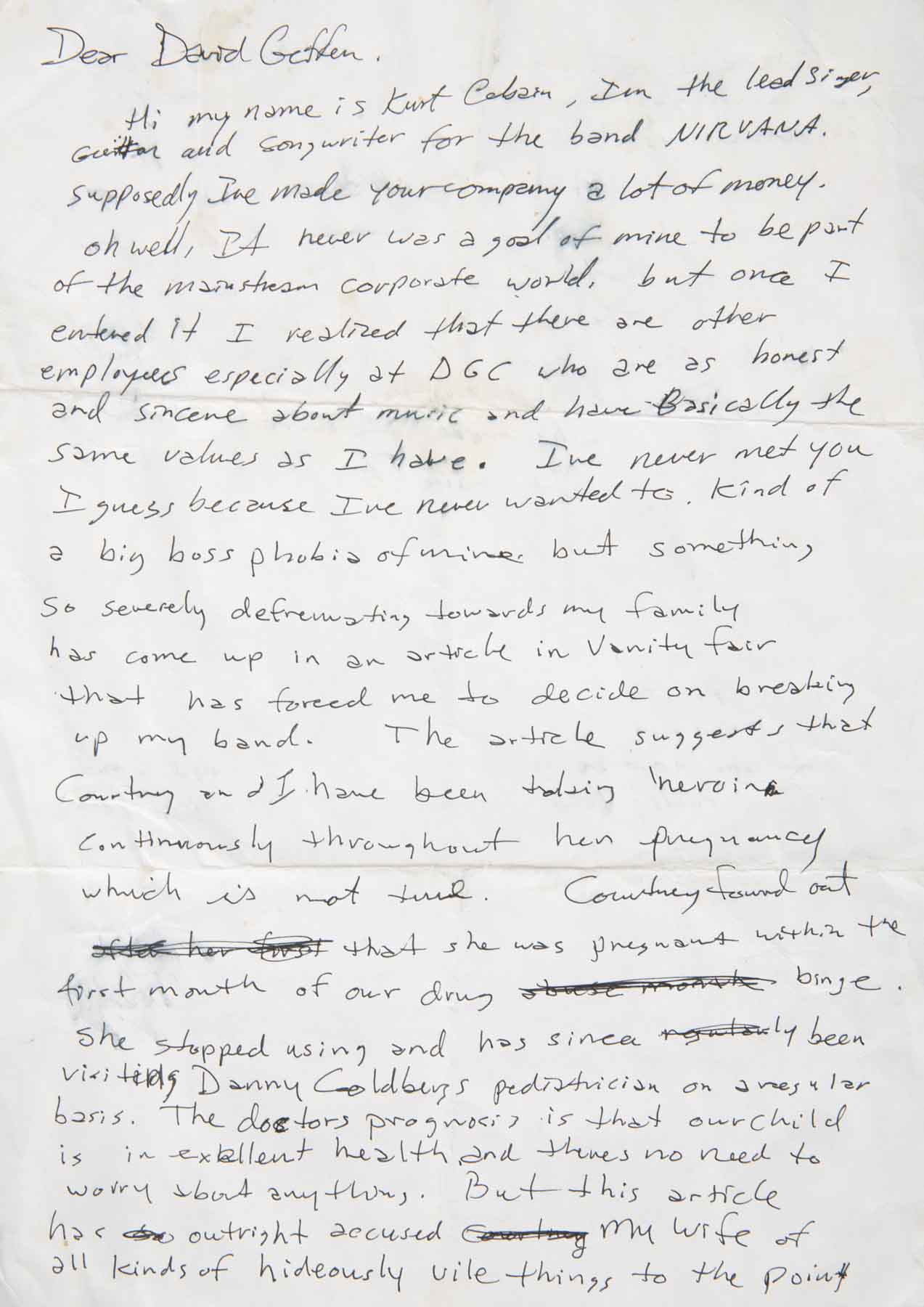
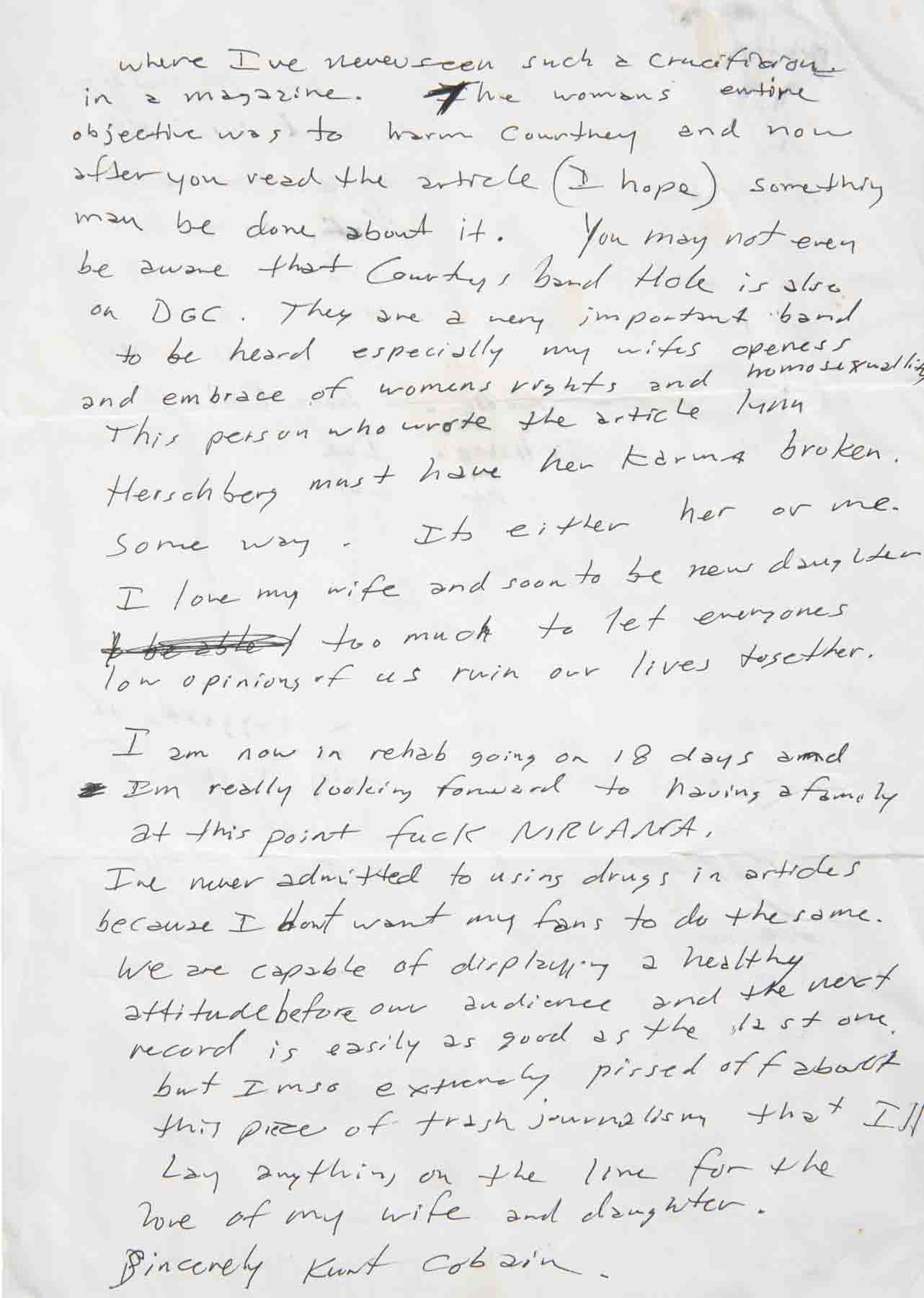

Freddie Mercury 1986 Queen Magic tour stage worn jacket
A red and white cotton twill military-inspired jacket designed by Diana Moseley and worn by Freddie Mercury on Queen’s 1986 Magic Tour.
This was Queen’s biggest tour and Mercury’s final tour with Queen. From this tour, Queen has since released Live at Wembley '86, Live Magic, and Live in Budapest (later re-released as and retitled Hungarian Rhapsody: Queen Live in Budapest ’86).
The “Rock Solider” jacket is embellished with straps and buckles, eyelets, gold bullion trim, and epaulettes that were used to attach Mercury’s white silk stage cape. Moseley and Mercury worked closely during the design process of his tour costumes.
Mercury drew the inspiration concept from Spanish opera military costumes and a costume Moseley designed for him in the 1985 music video for “I Was Born to Love You.” Moseley utilized the military inspiration and combined it with a more casual Levi’s jacket style to keep Mercury accessible to his audience and not present him as an over stylized icon.
He originally chose a color palette of yellow and red based on the Spanish Catalan flag and his love of Barcelona. Moseley combined this with white since white works well in both natural daylight and with stage lighting. It also increased visibility on stage at the large stadium venues.
The jacket was gifted from Queen’s management to renowned sculptor Irena Sedlecka, who created the 10-foot statue of Mercury wearing the costume that was unveiled in Montreux, Switzerland, in November 1996.
A replica of the statue was present over the entrance of the Dominion Theatre in London's West End from May 2002 to May 2014 for Queen and Ben Elton's musical We Will Rock You.
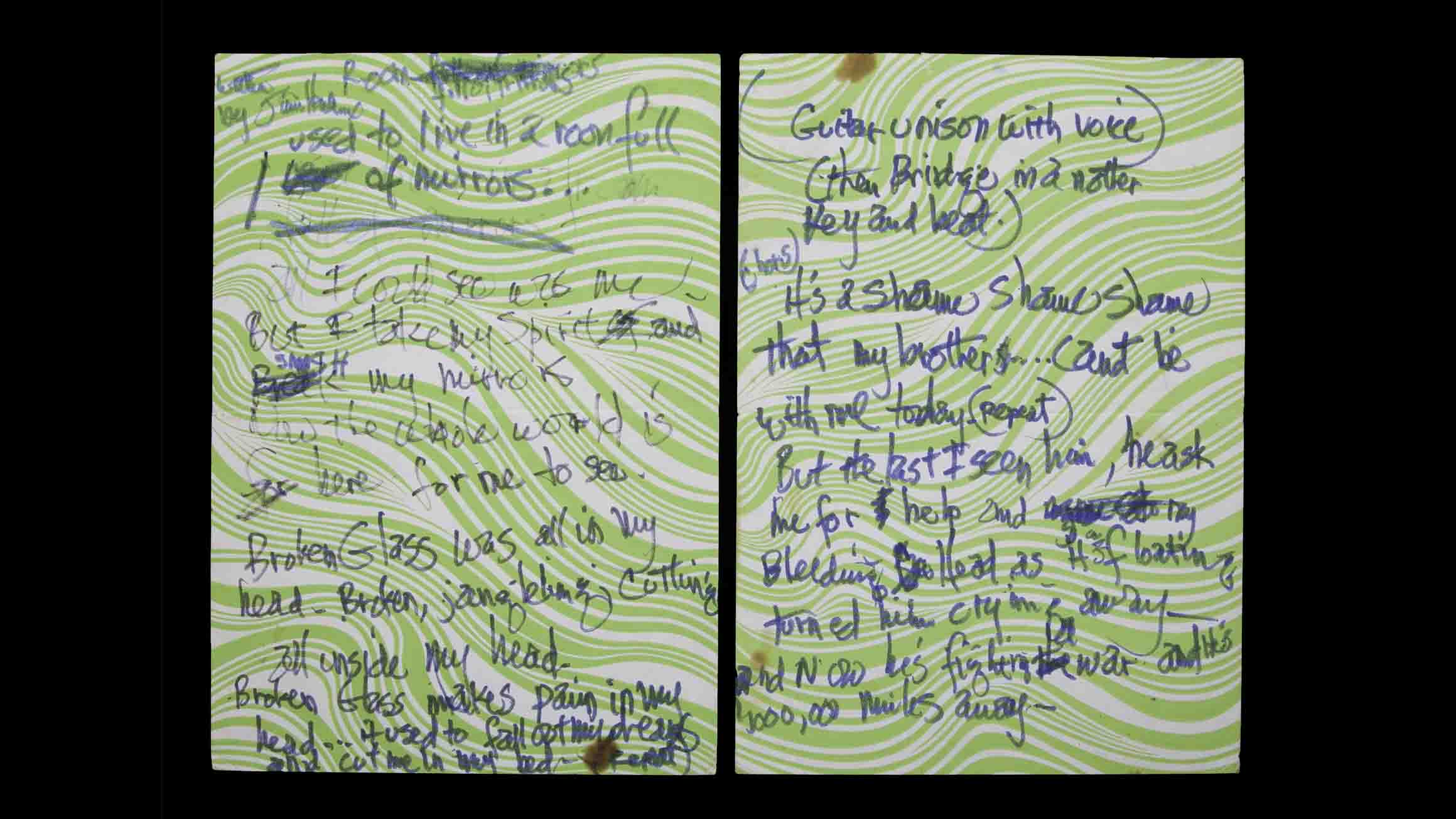
Jimi Hendrix handwritten lyrics
Two pages of working Jimi Hendrix lyrics for the songs “Room Full of Mirrors” and “Shame Shame Shame.” The lyrics are written on two single-sided pages of psychedelic green note paper.
Hendrix has signed the upper left corner of the “Room Full of Mirrors” lyrics “Written by Jimi Hendrix.” A burn mark, presumably from a cigarette, is in the lower right corner of the page.
The “Shame Shame Shame” lyrics also have two marks that may be cigarette burns. Hendrix has crossed out lyrics and changed words throughout.
5 3/4 by 8 1/4 inches
Mike has been Editor-in-Chief of GuitarWorld.com since 2019, and an offset fiend and recovering pedal addict for far longer. He has a master's degree in journalism from Cardiff University, and 15 years' experience writing and editing for guitar publications including MusicRadar, Total Guitar and Guitarist, as well as 20 years of recording and live experience in original and function bands. During his career, he has interviewed the likes of John Frusciante, Chris Cornell, Tom Morello, Matt Bellamy, Kirk Hammett, Jerry Cantrell, Joe Satriani, Tom DeLonge, Radiohead's Ed O'Brien, Polyphia, Tosin Abasi, Yvette Young and many more. His writing also appears in the The Cambridge Companion to the Electric Guitar. In his free time, you'll find him making progressive instrumental rock as Maebe.
